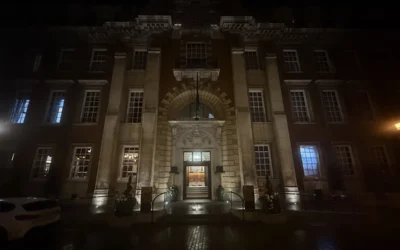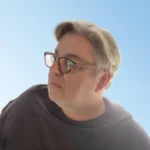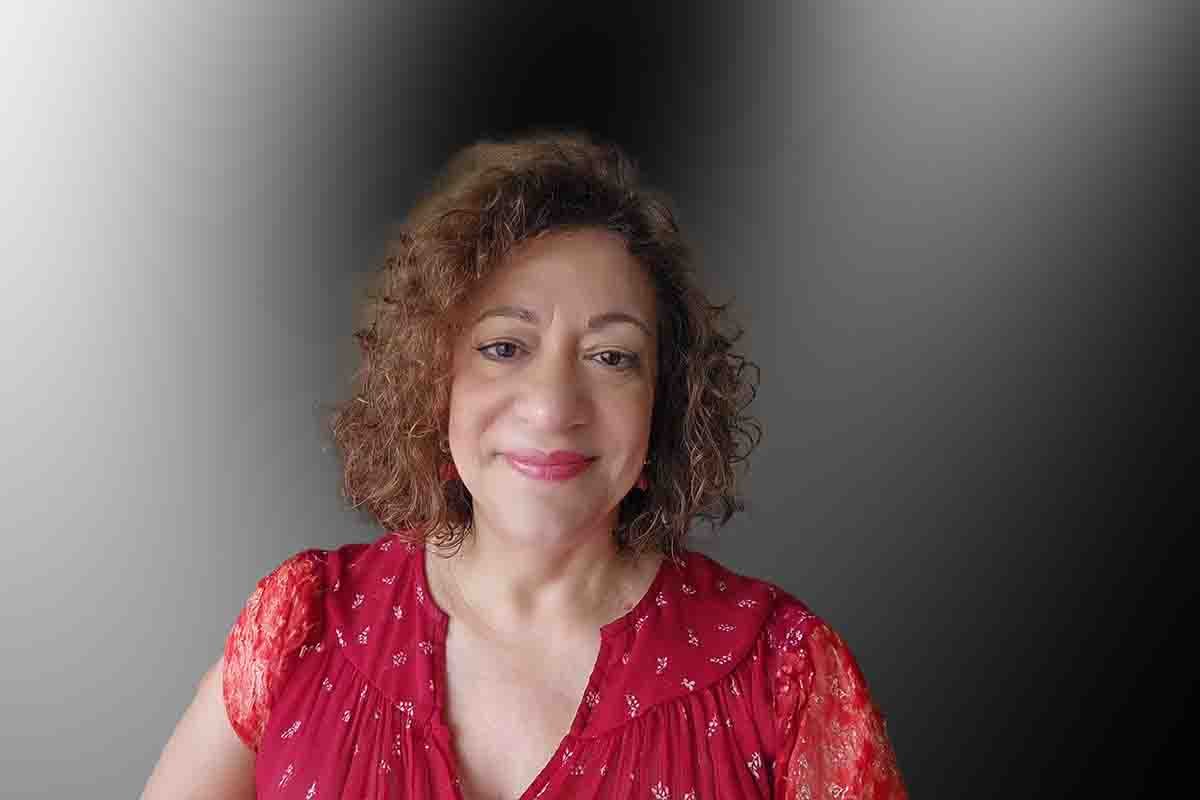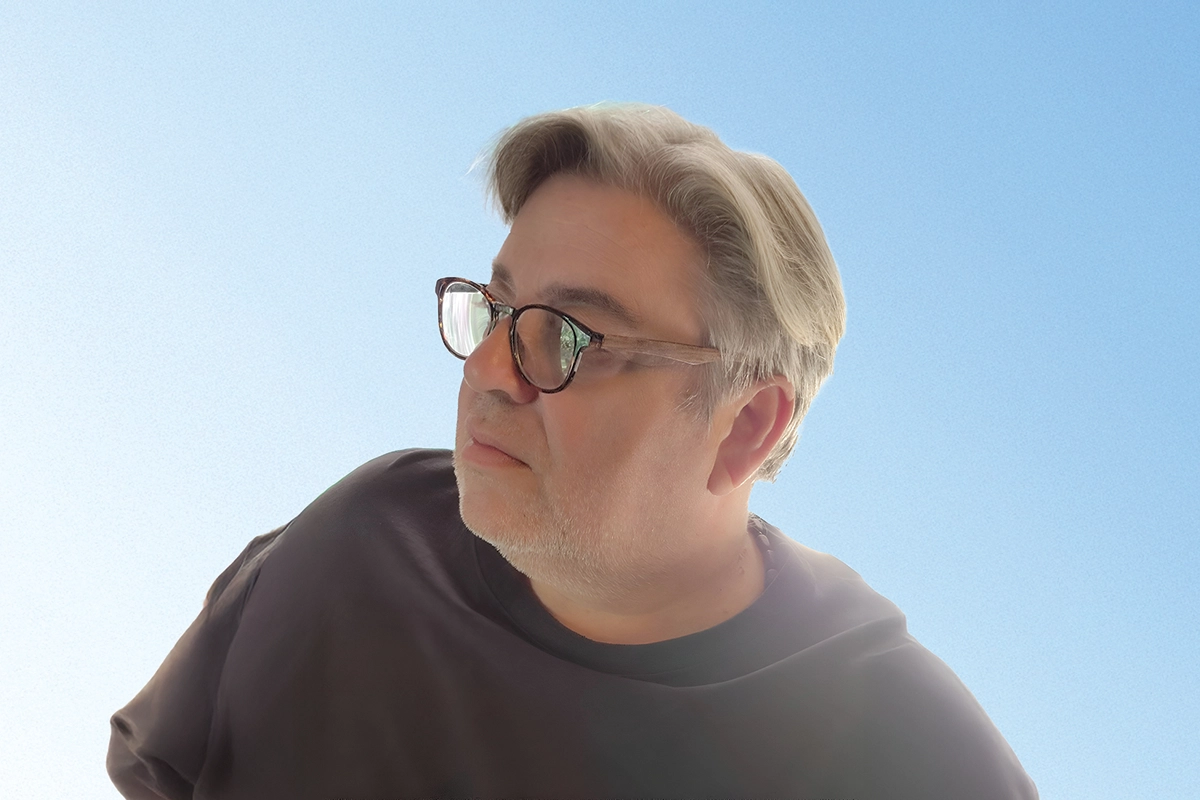The Velvet Edge – Maro Michalakakos on Time, Mortality, and Artistic Liberation

Exploring the profound intersections of life, death, and time
Maro Michalakakos reflects on mortality, her materials’ unique qualities, and the significance of animals in her work, creating art that meditates on life’s impermanence, beauty, and inevitable cycles.
Maro Michalakakos stands at the crossroads of artistry and introspection, weaving themes of life, death, and time into captivating installations and works on velvet. Known for her singular approach, Michalakakos transforms ordinary materials into intense explorations of existence, embodying concepts of finiteness and freedom. Her use of velvet, a fabric that both absorbs light and imposes limits, has allowed her to delve deeply into the paradox of permanence and fragility. Her art, now included in the Tate Modern and Guggenheim collections, is celebrated worldwide for its poetic richness, precision, and emotional depth.
In this interview, Michalakakos opens up about her journey—from her early experiences in her parents’ antique shop to her ongoing fascination with animals as symbols of instinctual strength and survival. She offers insights into her meticulous methods, including her innovative use of scalpels on velvet and her fascination with lint as a metaphor for time. Literary influences, such as Beckett and Verlaine, reveal themselves in her pieces, where time, mortality, and resilience take physical form. In this conversation, Michalakakos shares how these motifs continue to evolve, capturing the complex interplay of beauty, impermanence, and the human experience.
Maro Michalakakos, celebrated for her unique work with velvet and powerful meditations on life and death, photographed in her studio.
How has your exploration of the relationship between life and death evolved throughout your career, and how does this theme shape your work today?
The relationship between life and death has greatly influenced my work, and my understanding of it continues to evolve as I age and approach my own mortality, a reality I am continually trying to reconcile with. Over the years, I’ve gone through many phases. In my youth, I experienced what Constantine Kavafis referred to as “The joy of immortality in the eyes” in his poem “One of Their Gods.” Later, this gave way to anger toward death, the undeniable victor.However, as I’ve been fortunate enough to continue living and creating, my perspective shifts daily. I believe that accepting our inevitable end shapes us profoundly as individuals. It helps us set aside our “ego” and understand our existence as part of the larger cycle of life. Reflecting on our place within the universe can be enough to bring clarity and peace.Today, I am working on an installation that explores the theme of liberation through inertia. My intention is to restore the dignity of vultures, often misunderstood creatures. These birds, perched at the top of the food chain, are wrongly feared as symbols of death. In reality, they play a vital role in maintaining the ecosystem, disposing of death’s remnants as if they are untouchable by it, immune to time. In this way, they are symbols of life itself, operating under the constant shadow of death.
You’ve mentioned that the perception of finiteness changes with age. Can you elaborate on how your personal experiences have influenced the evolution of your artistic approach?
Growing up in my parents’ antique shop had a profound impact on me. Being surrounded by antiques nurtured a deep appreciation for craftsmanship and the stories each object carried. I loved spending time there, imagining the lives of the people who once owned these items; who sat on the sofas, slept in the beds, and dined with the forks and knives.The shop itself was a three-story treasure trove filled with items my father gathered from old houses and auctions: furniture, paintings, ornaments, anything you could imagine. To some, it may have looked like chaos, but to me, it was a little paradise, like something out of Ali Baba’s cave.One of the most fascinating experiences was visiting homes to choose furniture people were selling, often after the death of a loved one. In those moments, you could almost sense the personality of the deceased, piece together their life, and feel the dynamics of the family they left behind. These early experiences gave me an acute awareness of the passage of time, mortality, and the traces people leave behind.When I became a young woman, I moved to Paris to study art and pursue painting. I began with oil painting, but soon transitioned to working with velvet. Oil painting frustrated me because you could endlessly layer paint without a clear endpoint. This lack of finality bothered me, I needed to see the end. So, I turned to velvet, a material that imposes its own limits. I began using surgical tools to delicately remove the pile from the fabric. Velvet demands precision and restraint; you have to stop at a certain point, or else you risk damaging it. This process, with its defined limits, satisfied my need to confront and accept the concept of finiteness in my work.
Many of your works incorporate animals, especially birds, often in hybrid forms. What symbolism do these creatures hold for you, and how do they contribute to the narrative in your pieces?
The connection between the scalpels I use to shave velvet, and the talons of birds is quite clear. It’s no coincidence that birds have always fascinated me. Like many children, I’ve longed for the ability to fly. There’s something deeply instinctive about that desire for freedom and escape.Birds embody a sense of power and freedom for me. They use their wings, beaks, and claws without guilt or hesitation, simply acting on instinct. These qualities -strength, grace, and the ability to navigate the world freely- represent a kind of liberation that I seek to explore in my work. Their presence in my pieces, often in hybrid forms, serves as a symbol of this balance between freedom and survival, power and fragility.
Poetry and literature are key influences in your work. Could you share some literary works or poets that inspire you and how their themes resonate with your artistic vision?
Herman Melville’s Bartleby, the Scrivener: A Story of Wall Street has been a significant influence on my work, particularly in my velvet installation Red Carpet. This piece, which features the imprints of a predatory, imaginary being unfurling from ceiling to floor, directly explores themes of power and its relationship with finitude. The creature’s agony, as it descends, leaves its mark on the red carpet, while humour—another key dimension of the piece—softens the mythical monster’s form, wrapping it in velvet.This work has found its place in The Tate Modern’s permanent collection through the D. Daskalopoulos Collection gift.Another example of literary inspiration is my installation Oh! les Beaux Jours, currently on display as part of the exhibition By Way Of: Material and Motion at the Guggenheim Collection (until January 2025), curated by Naomi Beckwith. This piece is inspired by Samuel Beckett’s homonymous play and Paul Verlaine’s poem.Ever since I began shaving velvet, I have been unable to discard the lint. Without fully understanding why, I’ve been meticulously collecting and storing it, almost as if it holds a deeper significance.In Beckett’s play Happy Days, Winnie is gradually buried by the ground, which swallows her up, yet she remains resilient, continuing to chatter until the end, sucking the final “breath” of life. In my interpretation of Happy Days, however, Winnie is absent. Instead, the main character is time itself, represented by the accumulation of fluff. Two mountains of lint rise upward, growing with the dust that settles upon them.These are two mountains made of time.













